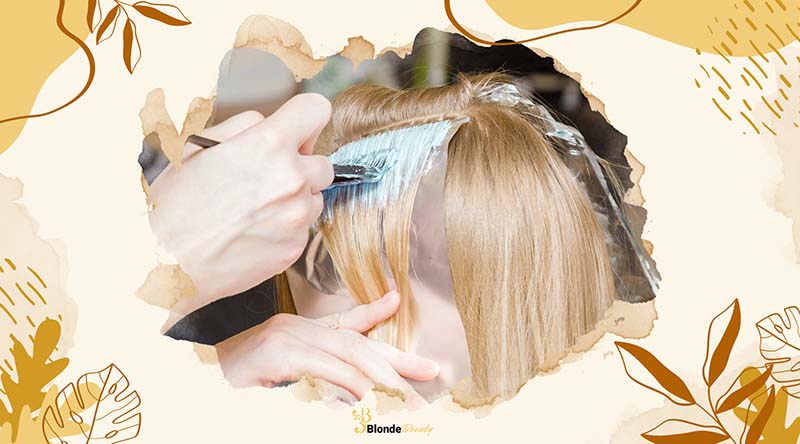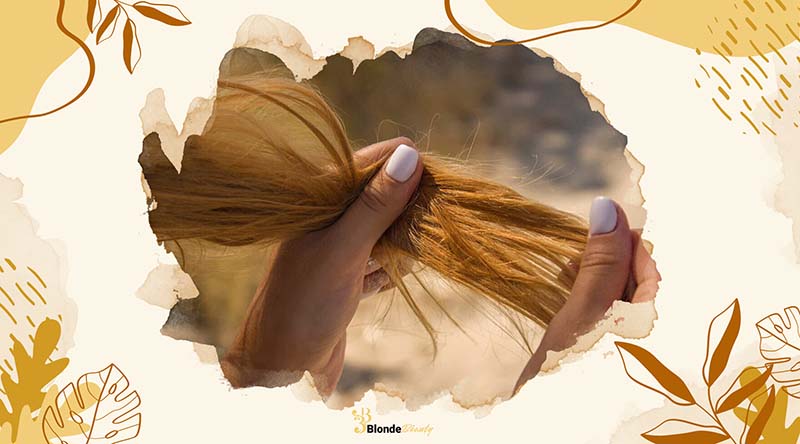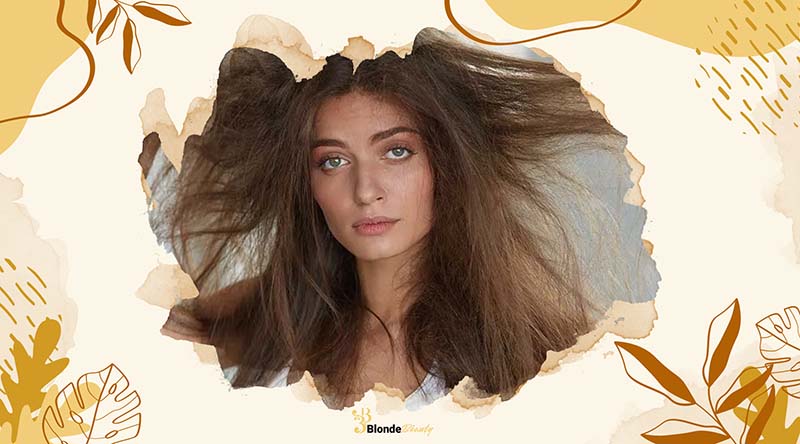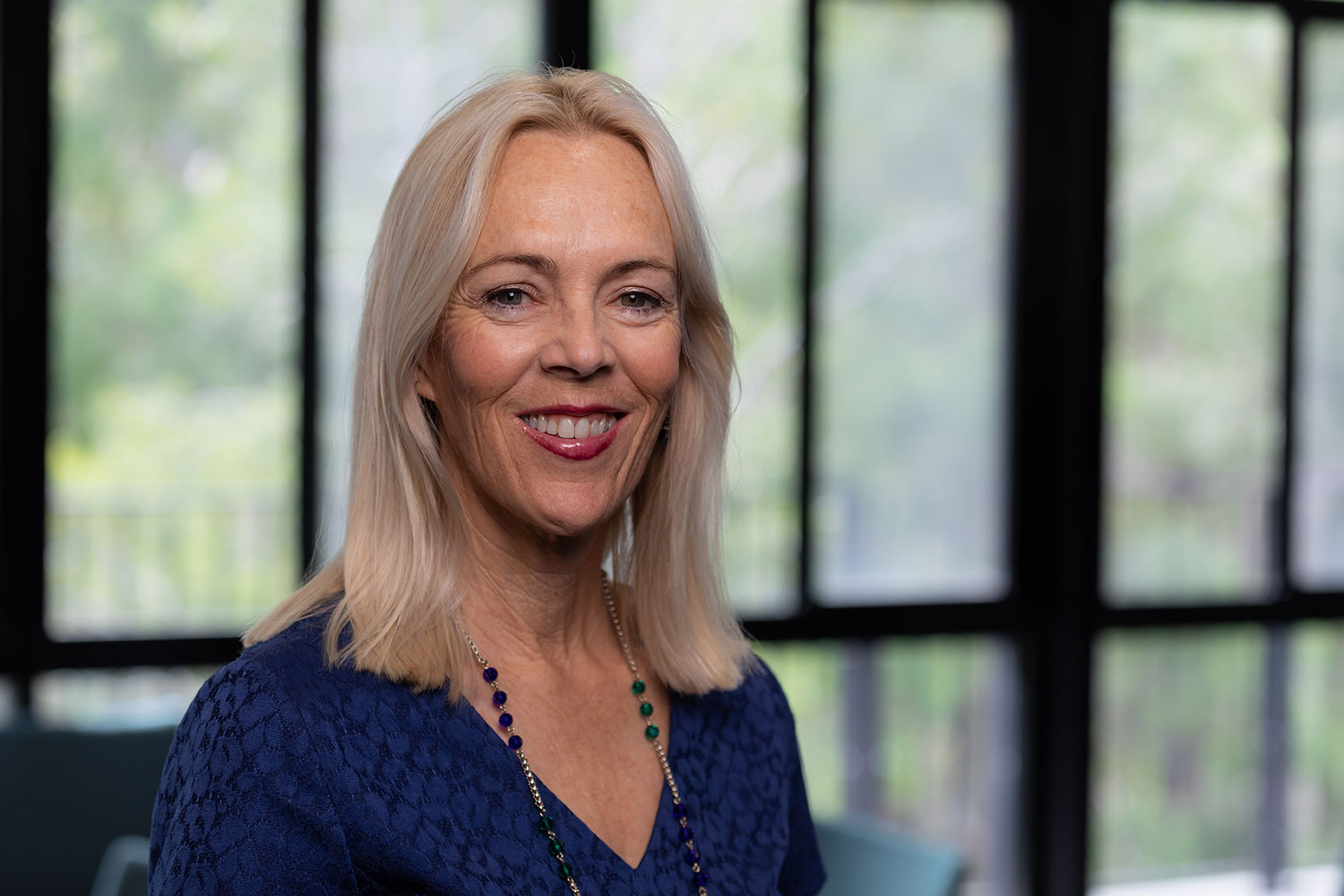Hair bleaching is currently one of the hottest trends in haircare, popular for those looking to go blonde, add vibrant colors, or enhance their style with highlights. Unlike regular hair dyes, bleaches are much stronger and can significantly impact your hair’s health and texture. A common concern is, “Does bleaching hair cause hair loss?” While bleaching itself doesn’t directly cause hair to fall out, the process can lead to increased hair breakage and damage if not done properly.
When deciding to bleach your hair, it’s crucial to use the right products and follow proper techniques. Pay close attention to the type of bleach you use, how you apply it, and how long you leave it on your hair. Adhering to best practices in hair bleaching can help you achieve the desired look while minimizing the risk of damage and maintaining your hair’s health.
Does Bleaching Hair Cause Hair Loss?
Bleaching your hair can indeed increase the likelihood of hair loss, primarily due to the damage it causes to your hair’s structure. When you bleach your hair, it becomes dry, brittle, and less elastic, setting the stage for breakage and split ends. This kind of damage makes hair loss more common because bleached hair is also more porous and susceptible to damage from styling tools like blow dryers or curlers.
While bleaching itself doesn’t directly cause hair to fall out, the resulting damage from normal activities like brushing or sleeping can lead to increased breakage. Sometimes, this breakage occurs near the root, creating the appearance of hair loss with visible stubble, which can be alarming. However, it’s important to note that bleaching and highlighting, although damaging, do not inherently cause hair to fall out.
Direct hair loss from bleaching can occur only if there is a chemical mishap, such as leaving the bleach on for too long or if the chemical mix is incorrect. These errors can harm the scalp and potentially lead to more severe hair and scalp issues.

Notes
- Avoid Over-Processing: Make sure to follow the instructions on the bleaching product carefully. Leaving bleach on for too long can cause severe damage to both your hair and scalp.
- Scalp Protection: Apply a protective layer, such as a scalp oil or cream, to protect your scalp from potential burns or irritation during the bleaching process.
- Regular Trims: Regular haircuts can help manage split ends and reduce the likelihood of breakage, keeping your bleached hair healthier.
- Gentle Handling: Be extra gentle when brushing or styling bleached hair. Use a wide-tooth comb and avoid excessive heat styling.
How Often Can You Bleach Your Hair?
Ideally, you should bleach your hair no more than once every three to eight weeks.
- All-Over Bleaching: When bleaching your entire head, it’s best to wait until your new growth reaches about half an inch. Apply the bleach only to the new growth to avoid overlapping and damaging previously bleached hair.
- Highlights: For foil highlights, it’s recommended to wait six to eight weeks or until your new growth is about one inch. This helps prevent overlap and maintain hair health. The same timing applies to treatments like balayage.
Waiting this amount of time gives both your hair and scalp time to recover. Your natural oils will help moisturize and protect your scalp and hair during this period.
Notes
- Pre-Bleaching Care: Deep condition your hair before bleaching to strengthen and moisturize it, protecting against bleach damage. Use a rich conditioner or a special pre-treatment for best results.
- Product Selection: Choose high-quality bleach and developer with protective ingredients like conditioning agents. Opt for products designed to be gentler on hair.
- Application: Apply bleach evenly to avoid overlap and ensure uniform lightening. Avoid re-bleaching already lightened areas to prevent damage. Section your hair methodically during application.
- Post-Bleaching Care: Nourish your hair post-bleach with protein treatments and moisturizing masks to rebuild strength and maintain hydration. This helps prevent breakage and keeps hair healthy.
- Professional Help: Consider consulting a professional hairstylist for the bleaching process to ensure optimal results and minimal damage. They can provide tailored advice and treatments.
- By following these tips and taking good care of your hair before, during, and after bleaching, you can enjoy your new look while keeping your hair as healthy as possible.
How Does Bleaching Affect Hair?
Bleach lightens your hair by stripping the pigment from your hair shaft through oxidation. It’s impossible to achieve a lighter shade without using a bleaching (or oxidizing) agent.
The most common bleaching agents are hydrogen peroxide and ammonia. These are often mixed together because, when used separately, they are unstable and slow in lightening the hair.
Be cautious of products labeled as ‘peroxide-free’ claiming to be ‘hair-friendly.’ Although they don’t contain peroxide, they will have another oxidizing agent that can be just as damaging to your hair.
Notes
- Oxidation Process: The process of oxidation breaks down the natural pigment in your hair, which weakens the hair structure and can make it more prone to damage.
- Chemical Exposure: Frequent exposure to bleaching agents can lead to dry, brittle, and weakened hair, making it essential to follow proper aftercare.
Signs of Bleach Damage
The most common signs of bleach damage in your hair include:
- Dullness and Loss of Shine: Bleached hair often looks lackluster and loses its natural shine.

- Brittle Strands: Hair becomes fragile and more likely to break.

- Flyaways and Split Ends: Bleaching can cause hair to become frizzy and lead to split ends.
- Excess Tangling: Damaged hair tangles easily and is harder to manage.

- Dry, Rough Texture: Hair feels dry and rough to the touch.
In rare cases, extreme bleach damage can cause hair to snap off or fall out. This usually results from misuse, such as bleaching twice in one day or attempting to lift color from hair that’s too delicate.
Your colorist knows the steps to avoid over-processing, so listen to their advice if they suggest you need to give your hair a break from bleaching. They have your hair’s best interests in mind.
Notes
- Professional Guidance: Always follow your colorist’s recommendations to avoid severe damage.
- Moisturizing Treatments: Regularly use deep conditioning treatments to help restore moisture and strength to bleached hair.
- Avoid Over-Bleaching: Give your hair adequate time to recover between bleaching sessions.
- Gentle Hair Care: Use gentle, sulfate-free shampoos and conditioners to minimize further damage.
How to Take Care of Bleached Hair
To combat hair loss from bleaching, use products that reduce the negative effects. Here’s how to take care of your bleached hair:
- Pre-Treatment: Use a pre-shampoo and conditioning treatment three days before bleaching. This preps your hair by adding moisture and strength.
- Post-Treatment: After bleaching, apply a deep treatment once a week. This helps plump your hair with moisture, making it more elastic, shiny, and manageable.
- Daily Protection: Use a daily damage defense product before leaving the house. It protects your hair against UV rays by sealing gaps in your hair strands. Elements like pollution, air conditioning, wind, and UV rays can damage your hair over time, especially if it’s bleached.
- Gentle Handling: Avoid brushing your hair too roughly or pulling it too tightly when styling. Bleached hair is more prone to breakage, so be gentle.
- Heat Styling: Use a lower heat setting on styling tools and always apply a hair thickening serum to defend against heat damage.
- Hydration: Keep your hair hydrated with regular conditioning treatments to maintain its elasticity and strength.
If you notice more hairs in your brush or hair tie, consider giving your hair a break from coloring and highlighting for a few months. Letting your hair recover is always a smart decision.
Notes
- Regular Conditioning: Consistently use deep conditioning treatments to keep your hair healthy and hydrated.
- Protective Products: Look for products specifically designed for bleached or color-treated hair to maintain its integrity.
- Monitoring Hair Health: Pay attention to signs of damage, such as increased hair loss or breakage, and take action to protect and nourish your hair.
FAQs
Can Bleach Hair Cause a Receding Hairline?
Bleaching does not directly cause hair loss, but it can increase the likelihood of hair loss due to damage. As hair becomes more damaged, everyday activities like brushing or sleeping can cause more breakage. Bleaching and highlighting damage hair but do not cause it to fall out.
Can You Bleach Your Hair Twice in One Day
No, bleaching your hair twice in one day can cause severe damage, including breakage and thinning. Bleaching should be spaced out to allow your hair time to recover.
Is It Safe to Bleach Your Hair While Pregnant
Yes, bleaching hair is generally considered as safe during pregnancy as using hair dye. However, it’s recommended to wait until after the first trimester and to avoid applying the bleach directly to the scalp to minimize irritation.
Conclusion
In conclusion, while hair color, bleach, lighteners, and dyes can lead to hair loss or thinning due to breakage and damage, it’s essential to handle hair dye with caution and awareness. Many wonder “Does bleaching hair cause hair loss?”. While bleaching does not directly cause hair to fall out, it can weaken hair, making breakage and thinning more likely. breakage and thinning more likely.
By taking proactive steps and using color-safe, nourishing hair products, you can significantly reduce the risk of damage. This approach helps keep your hair healthy and vibrant. Embrace these tips and enjoy a radiant, damage-free hair color that shines as brilliantly as you do.
For more great hair care advice and tips, be sure to check out more blogs from BlondeBeauty. Stay beautiful and keep shining.

Laureate Professor Clare Collins
Professor Clare Collins is a leading expert in nutrition and dietetics at the School of Health Sciences, part of the College of Health, Medicine and Wellbeing. Her work is changing the way we think about food and health. She grew up as one of nine children and was the first in her family to finish high school and go to college. This background gave her a strong work ethic and a deep appreciation for seizing opportunities.
As the Director of the Hunter Medical Research Institute’s Food and Nutrition Program and a recipient of three NHMRC Research Fellowships, Professor Collins is making a big difference in public health. She focuses on helping people who are often overlooked, using new technologies like apps and online programs to improve their nutrition and reduce the risk of chronic diseases.
Professor Collins is well-respected and has been recognized as a Fellow in four major health and science organizations. She leads a diverse team of experts, including dietitians, computer scientists, and engineers, working together on global health projects.
Her achievements are impressive. She has received over $29 million in research funding, published more than 450 papers, and helped 35 PhD and Master’s students complete their degrees. She’s also active in sharing her knowledge with the public. She has developed tools like the Australian Eating Survey and the Healthy Eating Quiz, and she often appears in the media to talk about nutrition.
PUBLISHED ARTICLES
- Collins, C. (2019). “The Effect of a Pilot Dietary Intervention on Pain Outcomes in Patients Attending a Tertiary Pain Service.”
- Collins, C. (2022). “Variation in cardiovascular disease risk factors among older adults.”
- Collins, C. (2022). “Evaluation of an online intervention for improving stroke survivors’ health-related quality of life: A randomised controlled trial.”
These articles show Professor Collins’s commitment to understanding how better nutrition can improve health. Her work is important for researchers, doctors, and anyone interested in healthy living.
